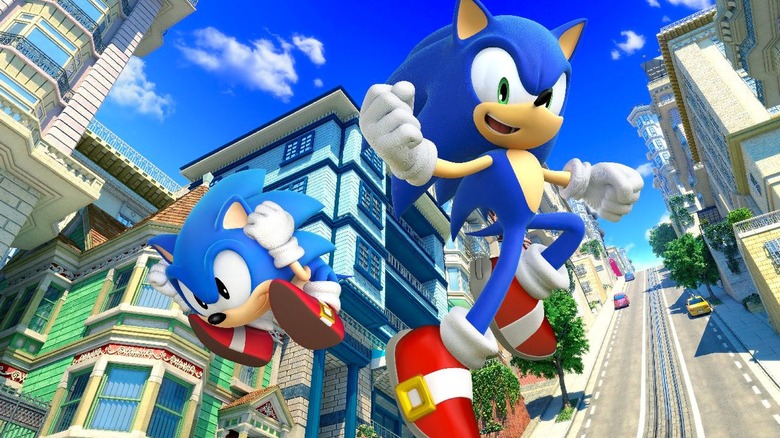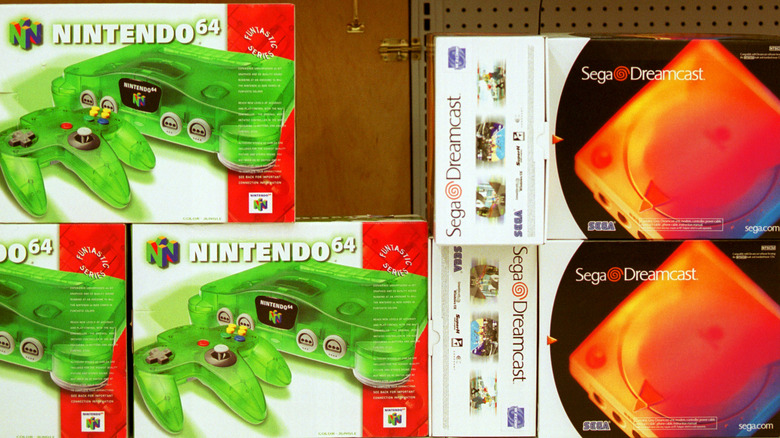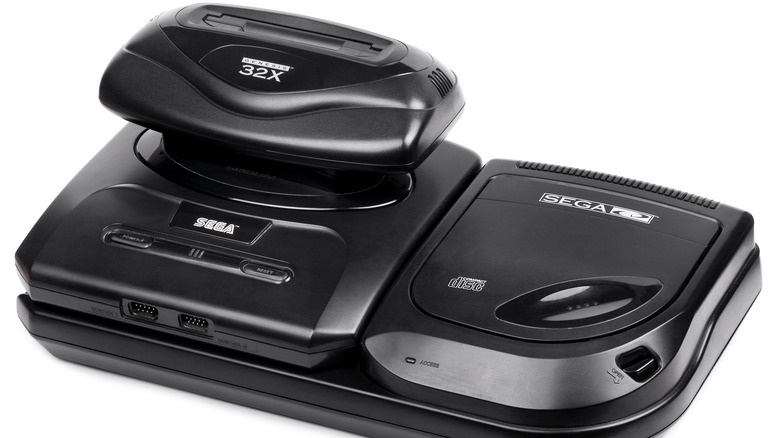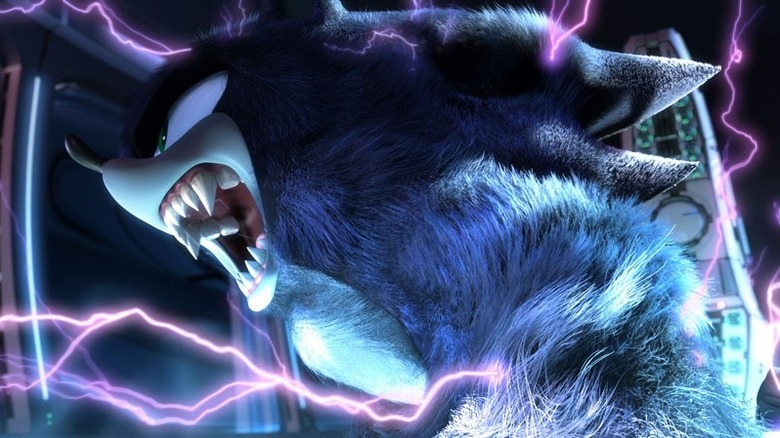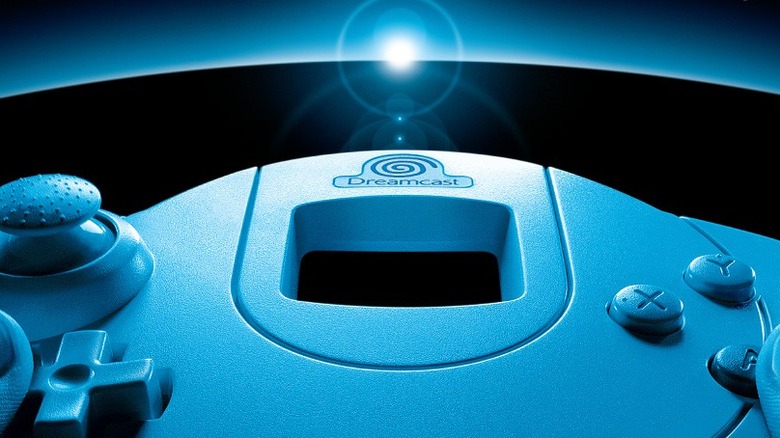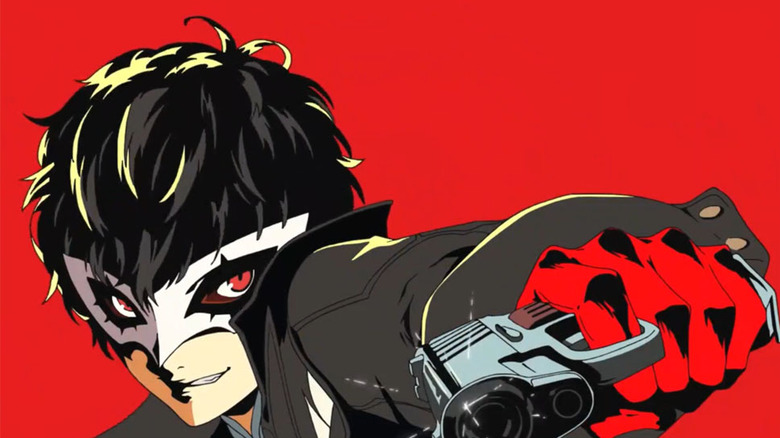Sega's Biggest Mistakes
In the early '90s, no gaming company was cooler than Sega. Its fast-running mascot, Sonic, was cooler than ice, and its systems were powerful enough to do what Nintendon't. But the company's decline occurred almost as quickly as its rise, and it released its final console 20 years ago. What happened? How could a company so good at what they did fall apart so rapidly? It's as easy as one ridiculous mistake after another.
Passing on the technologies that became PlayStation and Nintendo 64
The story of how Sony tried to develop a CD-based system with Nintendo, only to get rebuffed and turn their idea into the PlayStation, is a well-known one. Less told, however, is how Sega had the same chance and also blew it. Then, it had the chance to work with another prominent hardware company and blew it again. To put it mildly, Sega was good at blowing it.
According to the book Console Wars: Sega, Nintendo and the Battle That Defined a Generation, Sega was on top of the gaming world in the mid-90s, when Sony began talking with Sega CEO Tom Kalinske, about working on a CD-based gaming system together. Nintendo had already said no, so this would be Sega's chance to truly stick it to their competition. Somehow, the deal went nowhere, and Sony decided to make their own system.
Soon after, Kalinske began talks with Silicon Graphics, who wanted to turn their 3D workstation into a 64-bit game console. This would have given Sega the technology that eventually became the Nintendo 64. Unfortunately, Sega of Japan wanted nothing to do with the tech, and shot the idea down. Silicon took their talents to Nintendo, who soon made 64-bit history just as Sony was breaking ground with the original PlayStation.
Sega had just passed on two major pieces of hardware, and had nothing to show for it.
Awful timing with the Sega Channel
The idea of downloading and streaming games is pretty commonplace these days, but in the mid-1990s it was still a revolutionary idea. Sega attempted it with their Sega Channel, and it was actually one of the coolest things they ever thought up. Unfortunately, their timing could not have been worse.
As IGN explains, Sega Channel cost roughly $15 a month for an adapter that plugged into the Genesis. From there, subscribers could select up to 50 games (the titles constantly changed and rotated) and play them anytime. It was on-demand gaming–and there was a lot of demand. At its most popular, Sega Channel boasted over 250,000 subscribers, meaning people absolutely loved this thing.
Unfortunately, Sega Channel suffered from one major flaw: it came too late in the Genesis's life-cycle. It debuted in 1994, and the very next year Sega began focusing on the 32-bit market. While Genesis still existed, it was no longer the company's priority, and keeping Sega Channel's lineup updated became even less of one. It limped along for a couple more years before the Big Unplug happened in 1998. Had the channel launched with the Genesis, or even with the original Sonic, who knows how gargantuan it could've been? But it ultimately proved another wasted opportunity. Speaking of which...
Too much focus on hardware
For a while, Sega seemingly cared far more about fancy hardware than enjoyable software, and they eventually paid dearly for it. Rather than going straight from great Genesis games to great Saturn games, Sega kept focusing on Genesis add-ons. First came 1992's Sega CD, which actually sold like hotcakes, moving over 2.2 million units. Apparently Sega concluded if they released another Genesis add-on, they'd sell even more. So in 1994 we got the 32X, which sold like hotcakes that had fallen in the toilet, moving a mere 669,000 units.
It didn't help that few publishers wanted to make games for it–only 40 were released–likely since they knew the Saturn console was on its way. It did lead to the hilarious visual of a 32X on top of a Genesis hooked up to a Sega CD, like a Megazord of Mediocrity. Ex-Sega director Hideki Sato called the concoction "a monstrous tank," and he wasn't far off.
Amazingly, Sega almost released a third add-on, a combination Genesis/32X called the Neptune. Ultimately, even Sega realized focusing on Saturn was best. Unfortunately, that console's launch wound up getting botched too...
Releasing the Saturn too early
The 1995 battle between the Sega Saturn and the Sony PlayStation proved shockingly one-sided, as a huge Sega mistake meant a win for Sony's first foray into video gaming. Honestly, only the actual planet Saturn crashing into Earth could have made Sega's experience any worse.
As recapped by The Guardian, Sega planned to release the Saturn in North America in September 1995. Sony would release the PlayStation that same month, but Sega started to worry. Both consoles had been available in Japan for months, and PlayStation was starting to catch up in sales. So Sega of Japan president Hayao Nakayama decided to swerve Sony, and give American customers what he must've thought was a great deal.
At the 1995 E3 event, on May 11, Sega of America CEO Tom Kalinske announced the Saturn wouldn't launch in September–it actually launched already, at $399. It was like Ozymandias triggering his master plan 35 minutes ago...only much less successful.
That's because Sony had an immediate clapback. During their own E3 press conference, development head Steve Race approached the podium simply to say "299." Everyone went wild, knowing exactly what that meant. The PlayStation would cost a Benjamin less than the Saturn, and Sega was hosed.
It didn't help that the Saturn's launch was horribly mismanaged, with few games and consoles even available, plus plenty of retailers angry at Sega for not shipping them anything. As a result, PlayStation dominated the 32-bit era, and Sega never regained its footing.
The death of Sonic X-Treme
Sega's planned Saturn Sonic game, Sonic X-Treme, could've been their Mario 64: their mascot jumping to 3D and crushing it in the process. Unfortunately (as told by IGN), the game suffered through one of the the most disorganized developments, and ignoble deaths, in gaming history.
Originally meant for the Sega 32X, X-Treme was being built by a team that had never worked together before, as opposed to the usual team behind every other Sonic game. Then, when the 32X faltered, Sega made it a Saturn release. Bafflingly, they split the X-Treme team into two: one side worked on the main game as a PC title, while the other created the Saturn port plus the boss engine, which was to be more free-roaming than the "fixed perspective 3D" of the main game. That's like baking a single cake in two separate kitchens, only more disastrous.
Months later, Sega CEO Hayao Nakayama visited the studios, and decided he hated the main game but loved the boss engine. He ordered the entire game become that, meaning the X-Treme team had mere months to complete an entire 3D game. This meant 20-hour work days for programmer Chris Coffin, who worked so hard he caught pneumonia and almost died. Luckily, he didn't–but Sonic X-Treme did. The game simply couldn't be completed in time, so it was cancelled. With no backup plans for the hedgehog, the Saturn went without a single original Sonic adventure, damaging both Sega and Sonic almost irreparably.
And as it turned out, Sega wasn't done messing up its mascot's reputation.
They never figured out who Sonic really was
Sonic's fans know who Sonic is: a cool, super-speedy hedgehog who saves adorable animals from Dr. Eggman. Sega, meanwhile, seemingly has no clue who their mascot is, and their attempts to define him have resulted in some awful games and embarrassing, company-tarnishing moments.
For a while, Sonic's M.O. was simple: Eggman wanted Chaos Emeralds, and Sonic stopped him. But as Polygon pointed out, starting with Sonic Adventure, Sega started messing with the formula, needlessly introducing new characters, many of which didn't fit Sonic's world at all. Shadow has a gun. Silver is a time traveler who wanted to kill Sonic. Rouge the Bat is a sexy jewel thief. Note how none of this screams "run fast, collect rings."
But extra characters weren't enough for Sega; the company decided to experiment with the series' tone, too. And so, 2006's Sonic The Hedgehog went super-gritty, depicting Eggman as a violent terrorist and having Sonic romance a human, non-hedgehog woman who kisses him after he dies. He comes back to life after being kissed, but that doesn't change Sega actually killing their mascot as part of a game.
It gets worse with Sonic Unleashed, which turns Sonic into a fearsome "werehog," seen above. Imagine if Nintendo suddenly turned Mario into a monster, or if Bowser set the Mushroom Kingdom ablaze while countless Toads were immolated in flames. That's what Sega's done with Sonic, and the company's reputation suffered with his as a result.
No DVD player for the Dreamcast
By the late '90s, DVDs were replacing CDs as the hot storage medium, so it made sense for game systems to use them too. Sega thought otherwise.
The PlayStation 2, one of Dreamcast's biggest console competitors, boasted DVD capabilities from the start. Their games were shipped on DVDs too, making the PS2 both a gaming machine and a movie player. The Dreamcast, meanwhile, chose different technology called the GD-ROM. Developed by Yamaha with Sega in mind, GD-ROMs could hold up to a gigabyte of data, and their inability to be copied with a CD writer meant game piracy would be much harder. Besides, at the time you had to pay the DVD Forum royalties if you wanted to use their product, and Sega decided they'd rather not.
That sounds wonderful on paper, but the public was clearly asking for DVDs, and Sony listened, providing them an instant advantage. Plus, while GD-ROMs could certainly hold more data than CDs, DVDs held way more than GD-ROMs. GDs held one gigabyte of data, while DVDs hold anywhere from 4.7 to 9.4 GB, depending on how many sides are used. As for GDs' anti-piracy advantage, that was negated the second hackers discovered the Dreamcast's support for another technology called MIL-CD. By passing off their pirated discs as MIL-CDs, hackers could bypass the GD-ROM's security and boot up their illegal discs. With that, the Dreamcast became Homebrewer Heaven, which for Sega meant Moneymaking Hell.
Even worse, that was only the start of Sega's Dreamcast mistakes.
Not nearly enough Dreamcast games
You can have the coolest, strongest gaming system in the world, but if you don't have enough games, what's the point? That was a huge problem with the Dreamcast.
North America saw the release of a mere 257 Dreamcast games. While many have gone on to become cult hits and timeless classics, there simply weren't enough of them to justify the Dreamcast's existence. The lack of software wasn't simply because the system came and went within a year and a half. Rather, it was virtually a corporate mandate. According to Bernie Stolar, ex-President and CEO of Sega of America, the company's chairman, Isao Okawa, was fixated on systems and hardware, and didn't seem to recognize that software–the games–were why people bought the hardware in the first place.
As Stolar explained, "[Okawa] just didn't understand what the software was supposed to be like, and he didn't really understand the gaming industry ... and he was our biggest shareholder." In other words, the guy in charge knew nothing about games and didn't care much about them. That attitude, combined with Sega not putting enough money toward the project–Stolar complained, "we had bankers running [Sega]"–is a recipe for disaster. They announced a loss of over $400 million in 2000 (its third consecutive negative year), and like a recovering coffee addict speeding past Starbucks, the company hasn't made a gaming console since.
Divided management
Almost from the start, Sega has had two management companies–Sega of Japan and of America–and the two have apparently always butted heads.
According to former Sega America CEO Tom Kalinske, Sega Japan has harbored a long-standing grudge against its US counterpart. This may have begun during development of the first Sonic game. Sega Japan envisioned Sonic as being in a rock band, having a girlfriend named Madonna, and sporting sharp, fearsome fangs. America knew an overly edgy character would be hard to sell, so they made him cuter, with only a hint of edge. In Kalinske's mind, Sega Japan has never forgotten, nor forgiven, what his team did to their idea.
Whether that grudge exists or not, it's undeniable the two branches differ on many ideas. Sonic wasn't as popular in Japan, so they didn't push for him to star in many games. And as we've already detailed, when Sony approached Sega about working on the PlayStation, Sega Japan said no. And when the PlayStation started to sell well in Japan, they forced an early American release for the Saturn. We've already seen how that all turned out.
When a company's two halves are pulling in two different directions, it's no surprise when it doesn't actually go anywhere.
Being jerks about Persona 5
Even today, long after bowing out of the console market and devoting itself entirely to games, Sega still finds ways to mess up. Case in point: the time one of their subsidiary companies made a mighty big enemy out of YouTubers everywhere.
In April 2016, Sega purchased Atlus, the developer behind the Persona series. While the two companies are operated separately, Sega very much owns them. That also means Sega had a hand in threatening any YouTuber who dared stream Atlus games online. In April 2017, Atlus warned streamers and Let's Players that if they showed any Persona 5 footage past "the in-game date of 7/7," they'd likely get hit with a copyright strike. In the world of YouTube, a copyright strike is like being on Double-Secret Probation: you can't upload long videos, live stream, monetize, or do much of anything aside from watch puppy videos. More than that, deploying a copyright strike as a punishment that isn't actually related to copyright infringements actually abuses the system itself. You can imagine why streamers were mad at Atlus, and by extension Sega, over this.
After several months of enduring complaints, Atlus apologized...and then asked players to not stream past the in-game date of 11/19. At least this time, they left the threats of copyright strikes at home.

